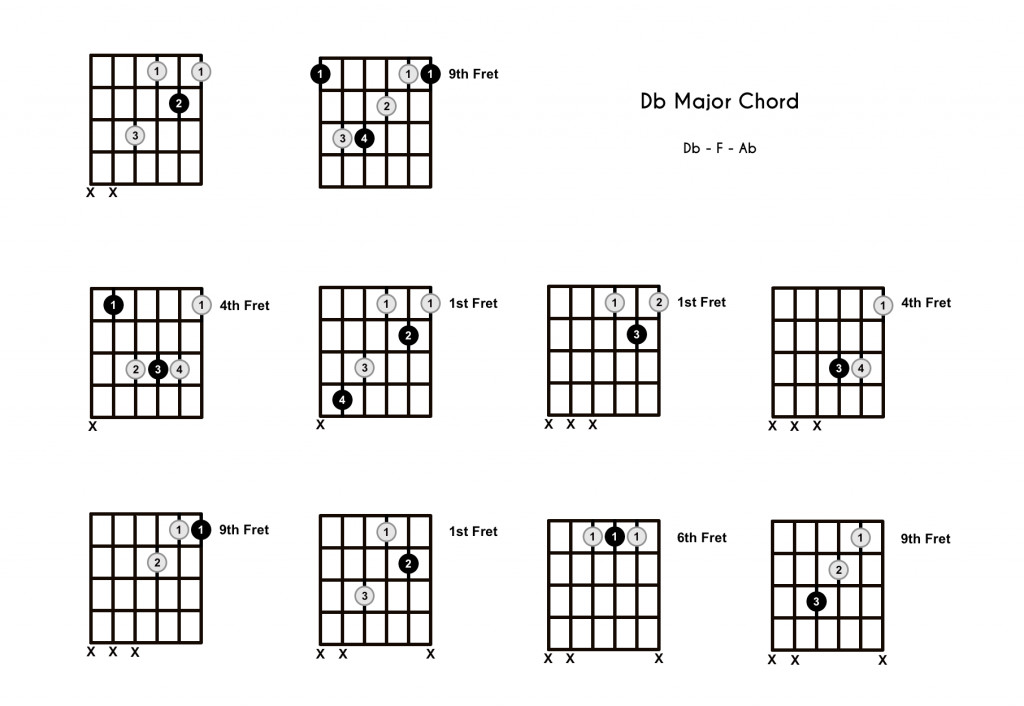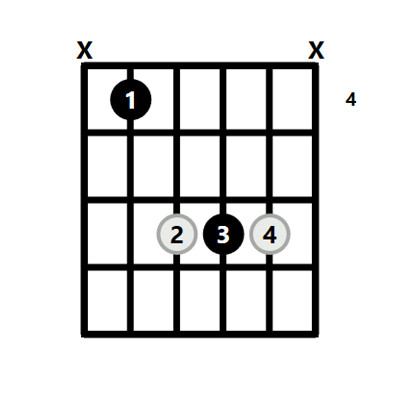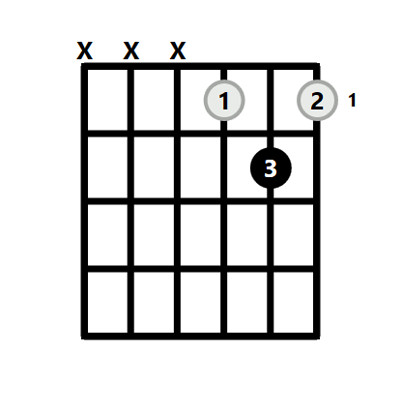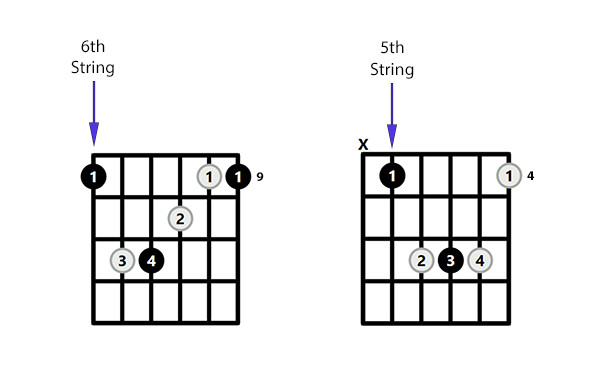The Db Major chord, often written as D♭, is a fundamental chord in guitar playing, known for its rich and mellow sound. While none of its notes are found on open strings, making barre chords essential, mastering the Db chord unlocks a vast range of musical possibilities. This guide will take you through various ways to play the Db chord, delve into its theory, and explore how to use it effectively in your music.
Understanding the D Flat Major Chord
Before diving into shapes, let’s understand what makes up a Db Major chord. Like all major chords, it’s built upon a specific formula of notes and intervals.
- Notes: The Db Major chord consists of three notes: Db, F, and Ab.
- Scale Degrees: These notes correspond to the 1st (root), 3rd, and 5th degrees of the Db Major scale.
- Intervals: From the root note (Db), the intervals are: a Major 3rd (to F), a minor 3rd (from F to Ab), and a Perfect 4th (from Ab back to Db an octave higher).
Knowing this basic theory helps you understand the construction of the chord and how it relates to other chords and scales. In the key of Db Major, the Db chord is the tonic (I) chord, providing a stable and grounded harmonic center. Other chords that naturally complement the Db Major chord within this key include Ebm, Fm, Gb, Ab, Bbm, and C diminished.
 Db Major Chord Shapes on Guitar Fretboard
Db Major Chord Shapes on Guitar Fretboard
Standard Db Major Chord Shape
The most common way to play the Db Major chord is using a barre chord shape, specifically the root-5 barre chord. This shape is typically positioned on the 4th fret. Although often referred to as a barre chord, in practice, the index finger might primarily emphasize the root note rather than forming a full barre across the fretboard.
 Diagram of Standard Db Chord on Guitar
Diagram of Standard Db Chord on Guitar
Easy Db Chord Shape for Beginners
If barre chords feel challenging, there’s a simplified version of the Db chord that’s easier to grasp initially. This “easy” Db chord shape is played on the top three strings of the guitar. It mirrors the shape of an open D chord but shifted down one fret, effectively removing the open strings. This shape is an excellent starting point for beginners to familiarize themselves with the Db chord sound.
 Illustration of Easy Db Chord Shape for Guitar
Illustration of Easy Db Chord Shape for Guitar
Step-by-Step Guide to Playing the Standard Db Chord
For those who prefer detailed instructions, here’s a step-by-step breakdown of how to play the most common Db Major chord shape:
- Index Finger Placement: Place your index finger on the 4th fret of the 5th string (A string). This finger will often only need to press down this single note firmly, acting as the root.
- Middle Finger Placement: Position your middle finger on the 6th fret of the 4th string (D string).
- Ring Finger Placement: Place your ring finger on the 6th fret of the 3rd string (G string).
- Pinky Finger Placement: Place your pinky finger on the 6th fret of the 2nd string (B string).
- Strumming: Avoid strumming the 6th string (low E string). Strum downwards from the 5th string to the 1st string.
Following these steps methodically is particularly useful when you are unsure if you are forming the chord correctly. By going through each step, you can ensure accurate finger placement and sound production.
Utilizing Barre Chord Shapes for Db Major
As mentioned, barre chords are crucial for playing the Db chord effectively across the fretboard. You can form the Db Major barre chord using two primary barre chord shapes: the root-6 shape and the root-5 shape. The root-5 shape, starting on the 4th fret, is the standard shape we’ve already discussed. The root-6 barre chord shape, derived from the E major shape, can be used to play Db Major starting on the 9th fret. Mastering barre chords expands your ability to play Db Major and other chords in various positions on the neck.
 Guitar Diagram of Db Barre Chord Shape
Guitar Diagram of Db Barre Chord Shape
Exploring Db Major Triads
Beyond full chord shapes, understanding and utilizing triads is invaluable for guitarists. Triads are three-note chords that are essential building blocks of harmony. The Db Major triad, in its fundamental form, contains the notes Db, F, and Ab. Triads can be played in three inversions, each with a different note in the bass:
- Root Position: Db – F – Ab (Root in the bass)
- 1st Inversion: F – Ab – Db (3rd in the bass)
- 2nd Inversion: Ab – Db – F (5th in the bass)
Practicing Db Major triads and their inversions provides a deeper understanding of the chord’s structure and offers alternative voicings that can be used in various musical contexts, from lead guitar lines to chord melodies.
 Db Major Triad Chord Shapes for Guitarists
Db Major Triad Chord Shapes for Guitarists
Keys Where the Db Chord Naturally Occurs
Understanding the keys in which the Db chord appears helps you use it appropriately in songwriting and improvisation. The Db Major chord is diatonic (naturally occurring) in the following major and minor keys:
- Db Major: (Db, Ebm, Fm, Gb, Ab, Bbm, Cdim) – Db is the tonic (I) chord.
- Ab Major: (Ab, Bbm, Cm, Db, Eb, Fm, Gdim) – Db is the IV chord.
- Gb Major: (Gb, Abm, Bbm, Cb, Db, Ebm, Fdim) – Db is the V chord.
- Bb minor: (Bbm, Cdim, Db, Ebm, Fm, Gb, Ab) – Db is the major III chord.
- F minor: (Fm, Gdim, Ab, Bbm, Cm, Db, Eb) – Db is the major VI chord.
- Eb minor: (Ebm, Fdim, Gb, Abm, Bbm, Cb, Db) – Db is the major VII chord (often functions as a dominant).
Alternative and Useful Db Chord Shapes
While the standard barre and easy shapes are fundamental, exploring alternative Db Major chord shapes can add color and variety to your playing. These shapes may not be as common but offer unique voicings and can be useful in specific musical situations or transitions. Experimenting with different voicings can enrich your harmonic palette and lead to more interesting guitar parts.
Db Chord Substitutions and Extensions
The Db Major chord is harmonically versatile and can be substituted or extended in various ways to create different moods and textures. Some common substitutions and extensions include:
- Db sus4: Adds a suspended fourth, creating a slightly unresolved and open sound.
- Db sus2: Suspends the second, providing a brighter and more airy quality.
- Db add9: Adds the 9th, enriching the chord with a jazzy and sophisticated flavor.
- Db Major 7: A richer, more complex major chord with a smooth, jazzy character.
- Db7: A dominant 7th chord that creates tension and a strong pull towards resolution, typically to Gb Major.
These substitutions and extensions allow you to move beyond the basic Db Major chord and explore more nuanced and expressive harmonic territories.
Scales for Soloing and Improvising Over the Db Chord
When soloing or writing melodies over a Db Major chord, certain scales will sound particularly effective. These scales harmonize well with the Db Major tonality and provide a framework for creating melodic ideas. Common scales to use over a Db Major chord include:
- Db Major Scale: The most natural choice, providing a consonant and diatonic sound.
- Db Lydian Mode: Creates a brighter, more ethereal sound due to the raised 4th degree.
- Db Mixolydian Mode: Although technically a dominant scale, it can be used over a major chord to create a bluesy or dominant-flavored sound.
Experimenting with these scales will help you develop your improvisational skills and create melodies that complement the Db Major chord effectively.
Further Exploration
Mastering the Db Major chord is a significant step in your guitar journey. By understanding its theory, practicing various shapes, and exploring its uses in different musical contexts, you’ll expand your musical vocabulary and unlock new creative possibilities on the guitar. Continue to explore different chords, scales, and techniques to further enhance your guitar playing skills.

